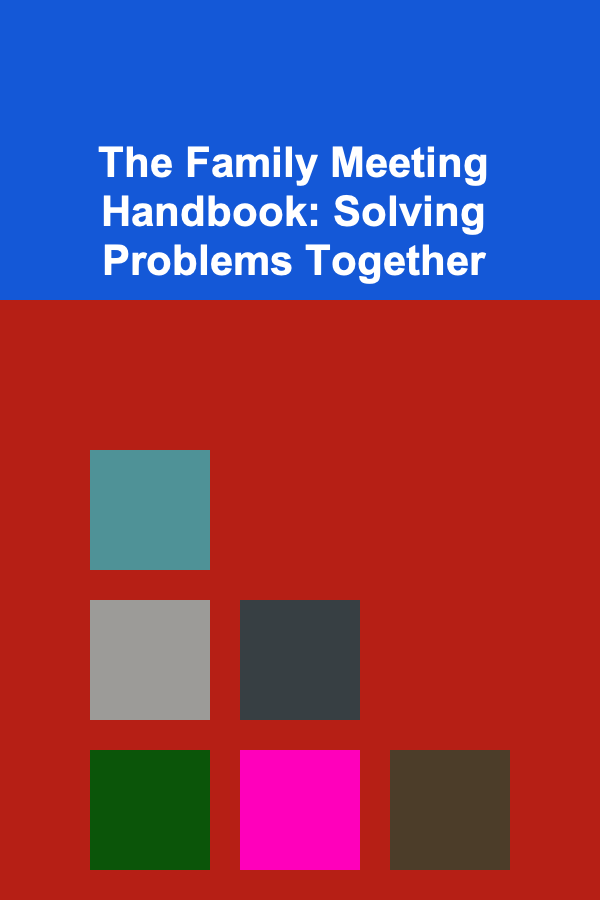
How to Plan YouTube Collaborations Effectively
ebook include PDF & Audio bundle (Micro Guide)
$12.99$6.99
Limited Time Offer! Order within the next:
Not available at this time

YouTube has grown into a global platform where content creators can connect with audiences from all over the world. While individual efforts can lead to success, collaborations are often a game-changer. Working with other YouTubers can provide exposure to new audiences, enhance the creativity of your videos, and help you reach milestones faster than working alone. However, a collaboration done incorrectly can have adverse effects, from mixed content styles to audience confusion.
Planning a YouTube collaboration requires careful thought, strategy, and execution. In this article, we will explore the best practices and key steps for planning successful YouTube collaborations. Whether you are a seasoned content creator or a newbie, these insights will help you collaborate more effectively and create content that resonates with both your audience and your collaborators' followers.
Understanding the Purpose of Collaboration
Before diving into the logistics, it's crucial to understand why you want to collaborate in the first place. YouTube collaborations come with various benefits, but knowing your goals helps ensure that both you and your collaborator are on the same page. Here are some common reasons why YouTubers collaborate:
- Audience Expansion: By collaborating with another creator, you are exposed to their audience, and vice versa. This can help you grow your subscriber base and reach new demographics.
- Creative Inspiration: Collaborating with others can bring fresh ideas to your content, introduce new techniques, and make your channel more dynamic.
- Boosting Engagement: Collaborations often spark interest among viewers who may be excited about seeing two creators they like working together.
- Brand Partnerships: If you're collaborating with a creator who has an established brand, you may also get opportunities for sponsorships or cross-promotions with relevant companies.
Establishing the purpose from the start sets the tone for the entire collaboration, ensuring that both you and your partner align with your objectives.
Finding the Right Collaborator
The next step in planning a YouTube collaboration is identifying the right collaborator. This is often the most critical decision, as a successful partnership depends on finding someone who complements your channel's style and mission. Here are factors to consider:
a. Audience Overlap
Look for creators whose audience overlaps with yours. While it's important to reach a new audience, you also want to make sure that the collaboration is relevant to your current subscribers. Collaborators in similar or complementary niches can help create seamless cross-promotions.
b. Content Style Compatibility
Your collaborator's content style should resonate with your brand. For example, if you produce educational content, collaborating with someone whose style is more comedic or casual might not align with your channel's message. Find someone who has a similar tone, whether that's educational, entertaining, or motivational.
c. Channel Size
While it can be tempting to collaborate with huge YouTubers for exposure, smaller creators may provide a more personal touch and targeted reach. Collaborating with someone around your channel's size can help both of you grow together.
d. Shared Values and Goals
Ensure that your collaborator shares the same values and goals for the collaboration. Clear communication is essential here. If you're both motivated by growth but have different approaches to content creation or fan engagement, it might cause friction later on.
e. Reputation and Professionalism
Work with collaborators who are professional and respectful. A good reputation in the YouTube community is invaluable. You want someone who is reliable, responds promptly to communication, and keeps their promises.
Brainstorming Collaboration Ideas
Now that you've found the right person to collaborate with, the next step is brainstorming ideas for the project. The more creative and unique your collaboration is, the more likely it is to attract attention and engage both audiences. Here are some popular collaboration formats:
a. Guest Appearances
Invite your collaborator to appear in one of your videos, either on camera or in a voiceover capacity. This is the simplest form of collaboration and can be as simple as an interview, discussion, or answering questions together.
b. Challenges and Tags
Participating in or creating a challenge or tag can be a fun way to engage both audiences. Think of a unique challenge related to your niche, and invite your collaborator to join in.
c. Co-Hosting a Series
If you want to create a long-term collaboration, consider co-hosting a series of videos together. This creates an ongoing connection between both audiences, helping you build a stronger relationship with your partner's viewers.
d. Joint Livestreams
Livestreaming can provide real-time interaction with both audiences. This type of collaboration is ideal for Q&A sessions, discussions, or live reactions to trending topics.
e. Collaborative Tutorials or Product Reviews
If both you and your collaborator specialize in certain topics, such as tech, beauty, or education, a joint tutorial or product review can provide valuable content for both your channels.
f. Shoutouts and Cross-Promotions
If you don't want to do a full-fledged video together, shoutouts and cross-promotions can still provide a huge benefit. Mention your collaborator's channel in one of your videos or direct your audience to their content.
g. Storytelling or Series Collaboration
You can create a collaborative storyline where both creators contribute to the narrative. This could be a multi-part series where each creator films their portion of the story, and the audience has to watch both videos to get the full picture.
h. Guest Collaboration on Social Media
In addition to YouTube, social media platforms like Instagram, TikTok, or Twitter can be used for cross-platform collaborations. Share behind-the-scenes content, teasers, or host joint giveaways to get your audiences excited.
Define Roles and Responsibilities
Before filming begins, make sure both you and your collaborator have clearly defined roles and responsibilities. Discuss who will handle the logistics, editing, promotion, and what expectations are in place for each party. Having clear roles helps avoid confusion and ensures that the project is completed smoothly.
a. Content Creation:
Decide who will be responsible for what portion of the content. If you're collaborating on a video, will one person be the lead, or will it be a co-hosted project? How will the filming process work?
b. Editing and Post-Production:
It's crucial to discuss who will be responsible for editing. If both creators contribute footage, how will the editing process work? Will you both edit your own parts, or will one person take on the full editing responsibility?
c. Promotion and Marketing:
Each party should be responsible for promoting the collaboration on their own platforms. But in some cases, it might be helpful to agree on specific social media posts, teasers, or email lists to send out in order to maximize exposure.
d. Monetization and Revenue Sharing:
If the collaboration involves monetization, such as brand deals, ad revenue, or affiliate links, it's important to clearly define how the revenue will be shared. Make sure you both agree on the terms before starting the collaboration to avoid misunderstandings later.
Set a Timeline
Having a clear timeline ensures that the collaboration is completed efficiently and without unnecessary delays. A well-thought-out schedule helps everyone stay on track and avoid missing deadlines.
- Pre-Collaboration Planning: Set aside time to plan, brainstorm, and communicate about the project. It's helpful to have a dedicated meeting to ensure everyone is aligned on expectations.
- Filming and Editing: Set deadlines for filming and editing to ensure the video is ready to be published on time.
- Promotion Schedule: Agree on a time frame for promoting the collaboration across various platforms (Instagram, Twitter, etc.) before, during, and after the video's release.
Optimize for Audience Engagement
Collaborations are a great opportunity to build engagement with both your audience and your collaborator's audience. During the collaboration, make sure you take the time to engage with viewers.
- Call-to-Action (CTA): Ask your audience to check out your collaborator's channel and vice versa. You can also ask viewers to comment, like, and share the video to increase visibility.
- Interactive Content: Encourage audience participation by asking for questions, ideas, or challenges. Doing so will help make the collaboration feel more interactive and relatable.
- Engagement Across Social Media: Announce your collaboration on social media platforms, responding to comments and questions to create excitement before the video goes live.
Monitor the Results and Adapt
After your collaboration is live, take time to monitor its performance and gather feedback from both your audience and your collaborator's audience. Pay attention to:
- Viewer Engagement: How did the viewers respond? Did they engage with the content in terms of likes, comments, and shares? Was the video received positively?
- Audience Growth: Check if you gained subscribers or followers from the collaboration. A successful collaboration should increase your reach and attract new viewers.
- Feedback: Ask for constructive criticism from your collaborator and your viewers. Did they like the content? Would they want more collaborations in the future?
Conclusion
Planning a successful YouTube collaboration involves much more than just choosing a partner and filming together. It requires clear goals, thoughtful content planning, and meticulous organization. When executed well, collaborations can result in mutual growth, creative content, and enhanced engagement for both creators. Whether you are collaborating to expand your audience or to create unique content, effective planning is key to making the most out of these partnerships.
By following the steps outlined in this guide, you will be able to plan and execute YouTube collaborations that leave a lasting impact on both your channel and the audience you aim to reach.

Becoming a Graphic Design Specialist: Key Skills for Impactful Visual Communication
Read More
How to Adapt Your Lifestyle to Climate Change
Read More
How to Prevent Water Damage in Your Home through Routine Maintenance
Read More
How to Price Your Homemade Cookies for Maximum Profit
Read More
How to Properly Maintain Your Home's Air Filters
Read More
The Family Meeting Handbook: Solving Problems Together
Read MoreOther Products

Becoming a Graphic Design Specialist: Key Skills for Impactful Visual Communication
Read More
How to Adapt Your Lifestyle to Climate Change
Read More
How to Prevent Water Damage in Your Home through Routine Maintenance
Read More
How to Price Your Homemade Cookies for Maximum Profit
Read More
How to Properly Maintain Your Home's Air Filters
Read More